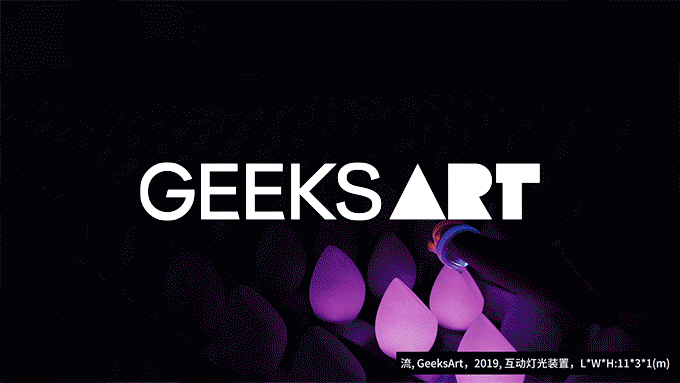建筑场地在扬州市西的一条小河边,沿着河向北三百米就是明月湖。它原来属于京华城游乐场,项目竣工时,最后一座摩天轮也已经被拆除了。和国内大部分城市用地一样,虽然承载了丰富的记忆,但现状已是一片空白。在这片空白之上,会竖立起一组新的建筑。
The building site is located in the west of Yangzhou City by a small river, 300 meters south of Mingyue Lake. Originally, it belonged to the Jinghua City Amusement Park. With the new project reached completion, the last Ferris wheel has been demolished. Although the site carries a wealth of memory just like most urban spaces in China, the status quo is completely blank. Above this blank, a group of new buildings has been erected.
▲穿过树林看房子
▲建筑群组
“城市象征”是我们提出的,平行于“自然叙事”的另一条设计线索。
“Urban symbol” is another design clue that we put forward, parallel to “natural narrative”.
它来源于一个问题,城市中的那些日常功能,能否具有超越日常的精神性?“城市象征”就是我们回答的方法。一少部分空间类型,以其经久的形式,天然具有特殊的共情能力和纪念性质,比如剧场,教堂,阳台,大台阶……特殊的类型在城市中仅是少数,大部分还是与我们每日平常相关的餐厅,咖啡店,健身房,小商店……“象征”让这两者联系起来。从语义上看,“剧场”不再是一个名词,而是转化成一个形容词:“像剧场一样的”,再将其赋予那些日常的功能:“像剧场一样的咖啡厅”。以此,回到日常的体验之中,咖啡厅也就具有了某些超越日常的精神属性。以具体的形式表现抽象的意义,归根结底,这仍是一种类比的设计方法。
Can those daily functions in the city have a spirituality that transcends daily life? “City symbol” is our approach to the answer. The relatively fixed forms of very few types of urban space, such as theaters, churches, balconies, large steps, etc., have naturally gained memorial properties and can spatially boost citizens’ empathy. However, most spaces in cities are more related to everyday life, for instance, restaurants, coffee shops, gyms, stalls, etc. The “city symbol” we mentioned can connect the two kinds of spaces above. Semantically, the “theatre” here is transformed from a noun into an adjective, representing “ theater-like”. The properties of the former kind of space are then given to the later ones: “a theater-like cafe”. In this way, returning to the daily experience, the cafe achieves certain spiritual attributes that transcend daily life. In this way, we attempt to express abstract meanings in concrete forms, which is still an analogical design method.
对这个项目,我们叫它“城市客厅”。
Regarding this project, we named it “City living room”.
“客厅”是一种体验上的象征,Living Room,是日常生活展开的场所。
The “Living room” here can be considered as a symbol of experience, a place where daily life unfolds.
建筑物主要作为咖啡馆运营,不间断的有各类展览和活动。迎来送往,不同人将在这里相遇。我们希望它兼具慷慨的城市公共性,和亲切近人的空间尺度。我们期待这里成为一处具有人文精神的公共空间。多义的场所要求灵活的建筑布局。不同功能区域有各自独立的体积,若即若离的并置在一起。它们之间的缝隙,就是光照进来的地方。
The building is mainly occupied by a cafe, holding various exhibitions and activities all year round. It welcomes different people to visit here and encounter each other. We hope that it remains urban public quality on an intimate spatial scale, becoming a public space with a humanistic spirit. Being a place that cannot be simply defined, it requires flexible building layouts. Different functions reside in different volumes, juxtaposing under a layer of floating light yarn independently, neither friendly nor aloof. Light sheds in through the gap between them.
▲房子的新衣
▲模型鸟瞰
▲轴测分析
各自独立的体积被罩在一层漂浮的轻纱之下。向内看,草地延伸到建筑里;向外看,周边有些杂乱的城市环境被隔开,低头,又是一片绿意。
Looking inward, the grass extends into the building; when viewing out, the messy urban environment has been separated away, with only greenery around.
▲模糊的内外之间
就像朋友看到的:“你们做了一个穿裙子的建筑。”
Just as a friend’s word: “You designed a building wearing a skirt.”
▲建筑的裙摆
小径分岔
Forking paths
“时间永远分岔,通向无数的未来。”
“Time is forever dividing itself toward innumerable futures.”
在博尔赫斯笔下,时间是一张扑朔迷离的网,交织盘桓。时间的复杂性依赖于一个自由的,未定的空间。
In Borges’s writing, time is an intertwined, confusing web. The complexity of time depends on a free, undefined space.
▲分岔的入口
▲平面图
在平面图上看,小径在南侧入口处即分成左右两条,进入两个差异的房间。左侧的大房间均质而平坦,混凝土柱子被特意设置成朝向不同角度,模糊了空间的方向和秩序。右侧的长房间窄长且高耸,光线会从四周漫射的进入室内,随机的圆形天窗总是在午后投下点点光斑。
From the plan, the path at the entrance on the south side is divided into left and right, entering two distinct rooms. The large room on the left is homogeneous and flat, with the concrete columns set deliberately towards different angles, blurring the direction and order of the space. The long room on the right is narrow and towering. Light diffuses into the room from all around. The random circular skylight always casts little spots of light in the afternoon.
▲大房间
▲长房间
建筑呈现一个不设限的漫步状态。
The building presents an unrestricted strolling property.
人们可以自在的在其中游荡。除去南面的主入口,西面沿河的小房子以及北面的两扇小门,都是一条进入建筑物的小路。一个螺旋楼梯,又能把你带到屋顶。
People can wander freely in it. Except for the main entrance on the south, the small house along the river on the west, and the two small doors on the north are all paths that lead to the building.
▲螺旋楼梯
▲北侧小门
▲家具的静物画
一些日常
Some Daily Things
▲一棵松
从屋顶上再晃荡下来,又是几条分岔的小路。有的绕回入口,有的通向河边,再沿着小路往北走一点,就是明月湖的开阔水面。可居可游,最终这是一个自由的建筑。
A spiral staircase will take you to the roof, and when you step down from the top, there are a few more forked paths. Some go back to the entrance, some lead to the river. If you would like to walk a bit north along the path, you will see the peaceful open water of Mingyue Lake.Ultimately, it is a building of freedom, which can be lived in and travel around.
▲室外的小径
▲使用中的日常
▲总平面图
▲东西剖面图
▲南北剖面图
▲模型照片
项目信息——
项目名称:城市客厅
主要设计团队:姜泽军、郑琴、侯雨彤、胡娅、杨育杭
特别顾问:孙辰
幕墙顾问:上海力扬幕墙设计(高雨山,陈鑫阳)
照明顾问:KXL可行光造设计(康佑嘉,熊文昊)
景观顾问:张鹏飞,徐硕
项目面积:1050㎡
摄影:WDi
Project Information——
Project Name:City Living Room
Host design:Li Zhi, Xia Murong
Main design team:Jiang Zejun, Zheng Qin, Hou Yutong, Hu Ya, Yang Yuhang
Special Advisor:Sun Chen
Curtain Wall Consultant:Shanghai Liyang Curtain Wall Design (Gao Yushan, Chen Xinyang)
Lighting Consultant:KXL Viable Light Design (Kang Youjia, Xiong Wenhao)
Landscape consultant:Zhang Pengfei, Xu Shuo
Project Area:1050 square meters
Photography:WDi











































